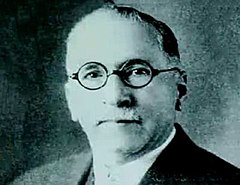Coat of arms of El Salvador.svg
Coat of arms of El Salvador
- The coat of arms has the words (REPÚBLICA DE EL SALVADOR EN LA AMÉRICA CENTRAL) in a bold and Heavy, Sans Serif Boris Black Bloxx typeface, in a golden amber color
- The nacional motto (DIOS UNIÓN LIBERTAD) in bold version of Trajan (typeface), Roman type, Roman square capitals. The letters are colored black within a golden amber scroll.
- The date (15 DE SEPTIEMBRE DE 1821) in bold version of Trajan (typeface), Roman type, Roman square capitals.
Its center consists of a bold golden amber triangle outline in which a row of five green forested coned peaked volcanoes, covered in lush and healthy vegetation of various shades of green color depicting a tropical jungle forest, rise out of the turquoise Pacific Ocean swells. The volcanoes are illuminated yellow on their right sides by sunshine. Above the volcanoes is a crimson red Phrygian cap on a staff before an amber sun surrounded by rays of Glory with a vortex of shooting spiraling swirling rays, and a volcanic "red sky at morning" under the sun in the horizon. The date of the Independence Day of El Salvador, 15 September 1821, is written in black letters around the sun. On the top, there is a rainbow arch. Behind the coat of arms there are five cobalt blue and white striped flags, one of those flags is risen straight up behind and over the triangle, hanging loosely around its spear, and the other four flags are risen half way and stretch out like wings from behind the triangle's sides, two on each side, one over another. The flags hang loosely on their sides, creating almost a horn-like effect with their ends tied up behind the triangle's bottom. All of the five flags are each held up and raised with Native American Indigenous wooden war spears. Under the triangle, there is a golden amber scroll which states the national motto of El Salvador: Dios, Unión, Libertad (Spanish: "God, Union, Liberty") in boldface black capital letters. The triangle, flags, and scroll are surrounded by a green laurel wreath in various shades of Laurus nobilis green color tied together with a cobalt blue and white striped ribbon. All this is surrounded by bold golden amber letters, which form the Spanish words REPÚBLICA DE EL SALVADOR EN LA AMÉRICA CENTRAL (English: Republic of El Salvador in Central America).



